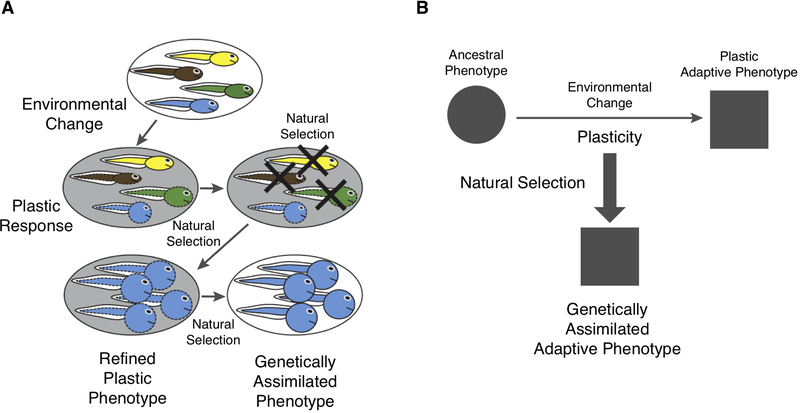Figure 4.
The model of Stress-Induced Evolutionary Innovation includes three steps. A) A stressor induces a generic stress response that protects the affected cells against the consequences of the stressor, such as oxidative stress. B) If the stress becomes frequent or predictable, then the stress reaction becomes “anticipatory protection,” meaning that it is triggered by physiological signals before the stressor arrives. Note that the phenotype remains largely similar to that of the generic stress response; only the signals that elicit the response change. This is the situation in the opossum ESF, where progesterone and prostaglandin together trigger the expression of anti-oxidant genes. One can speculate that the induction of the stress pathway by inflammatory cytokines could be an anticipatory response. C) Once the stress reaction is under the control of physiological rather than pathological signals, the phenotype of the affected cells can become the target of natural selection. If the stressor is routinely manifested in the life cycle of the animal, then the phenotype can evolve towards compensation. An example of this is the fact that DSCs specifically downregulate the apoptotic branch of the oxidative stress reaction[40], leading to a compensated cellular phenotype that is, to a degree, autonomous from the original stressor.

